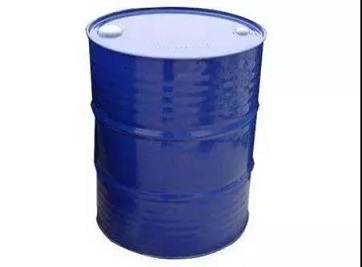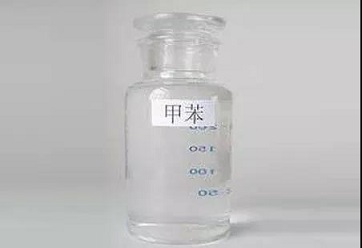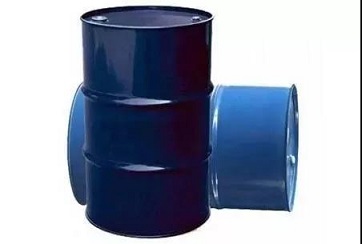At present, aromatic hydrocarbon solvents are the most widely used solvents in the coating industry. Because its origin and classification are complicated, and the names that have been inherited historically and the names that have been standardized in recent years are mixed together, it has caused confusion to some extent.
According to different sources, aromatic hydrocarbons can be divided into two categories: coking aromatics and petroleum aromatics. Coked aromatics are obtained by fractionation of coal tar, and petroleum aromatics are obtained by rectification of petroleum products through platinum reformate oil, catalytic cracking oil and toluene disproportionation oil.
Coked aromatics and petroleum aromatics are further divided into light aromatics and heavy aromatics according to the number of carbon atoms. Generally, those below C8 (including C8) are called light aromatics, and those above C8, mainly C9~C10, are called heavy aromatics. Aromatic hydrocarbons. Light aromatic solvents for coked aromatics include coked benzene, coked toluene, coked xylene and solvent naphtha. Light aromatics of petroleum aromatics include petroleum benzene, petroleum toluene and petroleum xylene.
1. Benzene
Industrial benzene is a colorless and transparent liquid with the unique smell of aromatic hydrocarbons. The impurities it contains mainly include aromatic homologues, thiophenes and saturated hydrocarbons, which need to be refined and removed when necessary. Benzene is insoluble in water (dipole moment is zero). In addition to polyols such as glycerin, ethylene glycol, diethylene glycol, and 1,4-butanediol, it can be mixed with ethanol, chloroform, carbon tetrachloride, carbon disulfide, ice, etc. Most organic solvents such as acetic acid, acetone, toluene, xylene and aliphatic hydrocarbons are miscible. Benzene can dissolve synthetic resins such as rosin, glycerin rosin, glycerin alkyd resin, vinyl resin, styrene resin, acrylic resin and other resins. Polyvinyl acetate resin is partially soluble in benzene; ethyl cellulose and benzyl cellulose are soluble in benzene; cellulose acetate and nitrocellulose are insoluble in benzene.

The main use of benzene in paint is to be used in conjunction with butyl acetate (or ethyl acetate), acetone and butanol as a diluent for nitrocellulose paint. Since benzene vapor is highly toxic to the human body, it is now mostly used Other solvents are substituted and tend to be eliminated.
2. Toluene
Industrial toluene is a colorless and transparent liquid with an odor similar to benzene, and may sometimes contain a small proportion of aliphatic hydrocarbons with the same boiling range. Similar to benzene, toluene is insoluble in water and is miscible with various organic solvents such as methanol, ethanol, chloroform, acetone, glacial acetic acid and benzene. Toluene can dissolve drying oil and other vinyl resins and alkyd resins except vinyl chloride. Adding methanol and ethanol to toluene can increase the solubility of cellulose acetate.

Because toluene evaporates quickly (about 3 times that of xylene), it is rarely used as a solvent. It is currently mainly used as one of the components in mixed solvents for vinyl paints and chlorinated rubber paints. It is used as a thinner in nitrocellulose paints.
3. Xylene
Xylene for coatings is a mixture of three isomers: o-, meta- and para-xylene. None of the three isomers is suitable for use alone as a solvent in coatings.
Industrial mixed xylene is a colorless and transparent liquid with the unique smell of aromatic hydrocarbons and sometimes emits weak fluorescence. Due to different sources, it is divided into petroleum mixed xylene and coking xylene. The former is divided into 3° mixed xylene and 5° mixed xylene according to different distillation ranges; the latter can be divided into 3°, 5° and 10° xylene, with other parameters basically the same.

Depending on the source and processing route, the contents of the three isomers in mixed xylene are also different. The following table lists the composition of petroleum mixed xylene produced by the three routes. At the same time, mixed xylene often contains ethylbenzene, a small amount of toluene, trimethylbenzene, aliphatic hydrocarbons and sulfides.
Coating products often require the use of anhydrous xylene. To remove a small amount of water in mixed xylene, calcium chloride, anhydrous sodium sulfate, phosphorus pentoxide or molecular sieve can be used as dehydrating agent.
Xylene is insoluble in water and miscible with ethanol, ether, aromatic hydrocarbons and aliphatic hydrocarbon solvents. Due to its strong solubility and moderate evaporation rate, it is the main solvent for short oil alkyd resin, vinyl resin, chlorinated rubber and polyurethane resin. It is also the solvent for asphalt and petroleum asphalt. It can be used as a diluent in nitrocellulose coatings. agent. Adding 20% to 30% n-butanol to xylene can improve the solubility of xylene to amino resin paints and epoxy resins. Because xylene can be used for both drying paint at room temperature and baking paint, it is currently the most widely used solvent and the largest amount of usage in the paint industry.



 微信扫一扫打赏
微信扫一扫打赏
